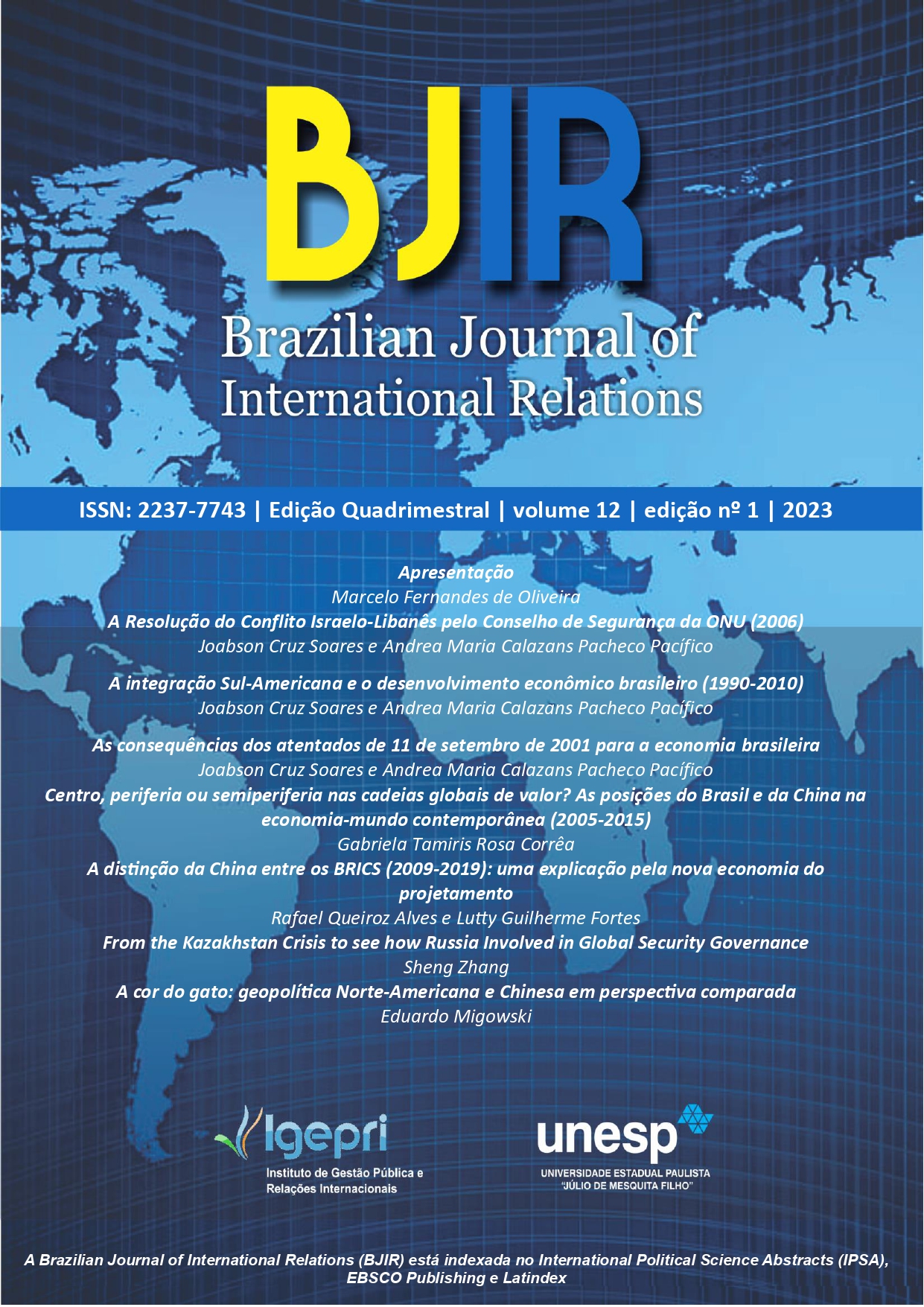Center, periphery or semiperiphery in global value chains? The positions of Brazil and China in the contemporary world-economy (2005-2015)
DOI:
https://doi.org/10.36311/2237-7743.2023.v12n1.p61-90Keywords:
Brazil; China; Global Value Chains; World-Economy;Abstract
How does the insertion of Brazil and China in the international division of labor (IDL) express and conditions their respective positions in the contemporary world-economy? The objective of this work is to verify how the aggregation of value in the trade of goods and services of Brazil and China in the global value chains (GVC), between 2005 and 2015, relates to their respective dispositions in the contemporary world-economy (center, periphery or semiperiphery). To meet this objective, we defined a sample of countries for each stratum of the world-economy, based on the classification by the World Bank's gross national income per capita (2020). Subsequently, we comparatively analyze the inclusion of Brazil and China in the GVCs between 2005 and 2015 and then measure the data on value-added trade available on the Trade in Value-Add (OECD/WTO) portal for the three strata of the capitalist world-economy. We found that Chinese trade in value-added are more similar to central patterns in recent years, while Brazilian have increasingly resembled to the peripheral ones. Therefore, although Brazil and China still belong to the semiperipheral stratum of the world-system, partly due to similar income patterns, the Asian state is closer to the capitalist center than Brazil, denoting the continuity of its domestic policies to national development and for upgrading the GVCs. We thus observe a bifurcation process in the semiperiphery of the capitalist world-economy, where China has been positively differentiated itself in the international division of labor in relation to its semiperipheral counterparts.







